The average cost of Atrial Septal Defect (ASD) Closure Surgery in India approximately ranges between INR 415750 to 548790 (USD 5000 to USD 6600)
The type of ASD Treatment is decided by cardiologists accredited by the best hospitals in India. ASD Closure Surgery Cost in India generally ranges from USD 5000 – USD 7000 depending on the severity & size of the defect. Our country has many internationally accredited hospitals, making India one of the top medical destinations for ASD Treatment. ASD requires no treatment if symptoms like frequent respiratory infections in children, shortness in breathing and difficulty breathing are not persistent, this generally happens if the defect is small or of moderate size. An atrial septal defect is a congenital abnormality of the heart's upper chamber. Bigger defects of middle-aged people with the symptoms are treated with surgical closure. Newer treatment methods also involve the use of a closure device through the use of catheters. This device called the Amplatz device is placed across the ASD to close the defect. This process though is new and does not apply to all patients.
This Atrial Septal Defect is present from the time of birth when the wall between the left and right atria doesn’t close completely. In the fetal stage, there is an opening between the two atria of the upper two chambers for the blood flow to the lungs but this opening generally closes by the time of birth. If ASD is persistent it is called a shunt. Every 4 people in 100,000 have a case of ASD and these people have an increased risk of multiple complications like infective endocarditis, stroke, and heart failure.
| City | Minimum Cost | Maximum Cost |
|---|---|---|
| Panjim | USD 5490 | USD 6350 |
| Bengaluru | USD 5000 | USD 6180 |
| Pune | USD 5220 | USD 6480 |
| Kochi | USD 5140 | USD 6370 |
| Chennai | USD 5040 | USD 6300 |
| Greater Noida | USD 5130 | USD 6320 |
| Noida | USD 5240 | USD 6020 |
| Kolkata | USD 5480 | USD 6010 |
| Ghaziabad | USD 5440 | USD 6490 |
| Gurugram | USD 5080 | USD 6200 |
Treatment cost
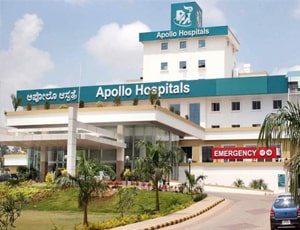
Types of Atrial Septal Defect (ASD) Repair in Apollo Hospitals Bannerghatta and its associated cost
| Treatment Option | Approximate Cost Range (USD) | Approximate Cost Range (INR) |
|---|---|---|
| ASD Repair (Overall) | 5717 - 13793 | 461788 - 1101321 |
| Surgical Repair | 5508 - 10284 | 463223 - 817726 |
| Transcatheter ASD Closure | 6714 - 11409 | 553416 - 924027 |
| Robotic-assisted ASD Repair | 7991 - 13681 | 647296 - 1091330 |
DOCTORS IN 13 SPECIALITIES
FACILITIES & AMENITIES
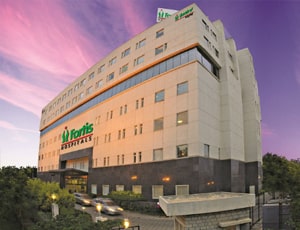
Types of Atrial Septal Defect (ASD) Repair in Fortis Hospital and its associated cost
| Treatment Option | Approximate Cost Range (USD) | Approximate Cost Range (INR) |
|---|---|---|
| ASD Repair (Overall) | 5064 - 12211 | 416200 - 1003352 |
| Surgical Repair | 5087 - 9155 | 415135 - 745747 |
| Transcatheter ASD Closure | 6090 - 10125 | 501264 - 834910 |
| Robotic-assisted ASD Repair | 7130 - 12225 | 582955 - 997517 |
DOCTORS IN 12 SPECIALITIES
FACILITIES & AMENITIES

Types of Atrial Septal Defect (ASD) Repair in Sarvodaya Hospital and Research Centre and its associated cost
| Treatment Option | Approximate Cost Range (USD) | Approximate Cost Range (INR) |
|---|---|---|
| ASD Repair (Overall) | 5072 - 12183 | 416608 - 997605 |
| Surgical Repair | 5072 - 9134 | 417405 - 752483 |
| Transcatheter ASD Closure | 6107 - 10130 | 496961 - 828421 |
| Robotic-assisted ASD Repair | 7124 - 12143 | 581546 - 1002777 |
DOCTORS IN 14 SPECIALITIES
FACILITIES & AMENITIES

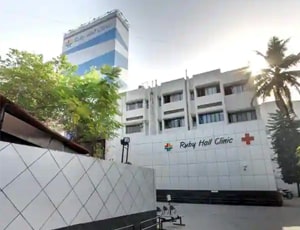
Types of Atrial Septal Defect (ASD) Repair in Ruby Hall Clinic and its associated cost
| Treatment Option | Approximate Cost Range (USD) | Approximate Cost Range (INR) |
|---|---|---|
| ASD Repair (Overall) | 4626 - 11369 | 385165 - 930779 |
| Surgical Repair | 4602 - 8468 | 383071 - 687558 |
| Transcatheter ASD Closure | 5531 - 9425 | 458622 - 777590 |
| Robotic-assisted ASD Repair | 6531 - 11116 | 533114 - 913394 |
DOCTORS IN 13 SPECIALITIES
FACILITIES & AMENITIES
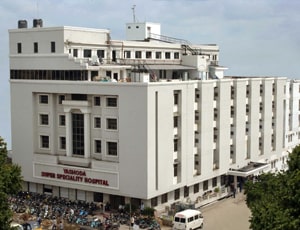
Types of Atrial Septal Defect (ASD) Repair in Yashoda Hospital, Malakpet and its associated cost
| Treatment Option | Approximate Cost Range (USD) | Approximate Cost Range (INR) |
|---|---|---|
| ASD Repair (Overall) | 5099 - 12151 | 416790 - 1000098 |
| Surgical Repair | 5064 - 9173 | 415951 - 751383 |
| Transcatheter ASD Closure | 6082 - 10178 | 497514 - 835281 |
| Robotic-assisted ASD Repair | 7099 - 12207 | 585322 - 1001156 |
DOCTORS IN 10 SPECIALITIES
FACILITIES & AMENITIES
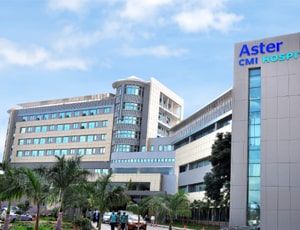
Types of Atrial Septal Defect (ASD) Repair in Aster CMI Hospital and its associated cost
| Treatment Option | Approximate Cost Range (USD) | Approximate Cost Range (INR) |
|---|---|---|
| ASD Repair (Overall) | 5087 - 12122 | 417082 - 1000417 |
| Surgical Repair | 5087 - 9111 | 415921 - 747946 |
| Transcatheter ASD Closure | 6071 - 10121 | 497157 - 832394 |
| Robotic-assisted ASD Repair | 7119 - 12195 | 581587 - 996005 |
DOCTORS IN 13 SPECIALITIES
FACILITIES & AMENITIES
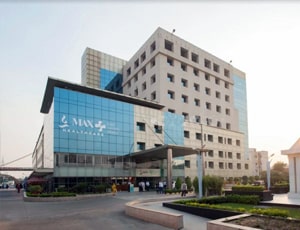
The cost for Atrial Septal Defect (ASD) Repair ranges from USD 5440 - 6490 in Max Super Specialty Hospital, Vaishali
Max Super Specialty Hospital, Vaishali located in Ghaziabad, India is accredited by NABH, NABL. Also listed below are some of the most prominent infrastructural details:
DOCTORS IN 14 SPECIALITIES
FACILITIES & AMENITIES
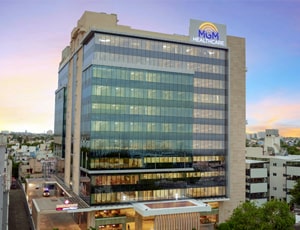
Types of Atrial Septal Defect (ASD) Repair in MGM Healthcare and its associated cost
| Treatment Option | Approximate Cost Range (USD) | Approximate Cost Range (INR) |
|---|---|---|
| ASD Repair (Overall) | 5054 - 12124 | 416217 - 996692 |
| Surgical Repair | 5073 - 9151 | 414350 - 752205 |
| Transcatheter ASD Closure | 6102 - 10107 | 499378 - 832961 |
| Robotic-assisted ASD Repair | 7132 - 12148 | 581556 - 1002943 |
DOCTORS IN 13 SPECIALITIES
FACILITIES & AMENITIES
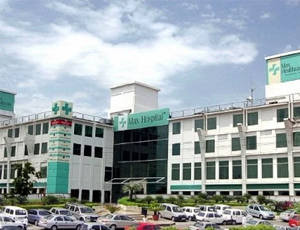
Max Hospital (Gurgaon branch), one of the top medical facilities in India, was established in 2007. Max Gurgaon Hospital is the first multi, super specialty tertiary care in the Location. Out of many other awards, the hospital also possesses the Express Healthcare Awards for Excellence in Healthcare. It is also certified to ISO 9001:2000 standards. The Institute of Minimal Access, Metabolic & Bariatric Surgery at Max Gurgaon has been designated as a Center of Excellence for providing cutting-edge Clinical Services and Surgical Training Programs for Abdominal Wall Hernia Surgery.
Over 5 lakh patients have been treated at the 92-bed Max Hospital Gurugram, which holds expertise in 35 specialized fields such as Cardiac Sciences, Minimal Access, Laparoscopic Surgery, Neurosciences, Urology, Orthopaedics, Aesthetics, Reconstructive Surgery, and Nephrology. The laboratories at Max Healthcare hospitals are accredited by NABH and NABL. It also provides hemodialysis for patients who have end-stage kidney disease and requires renal replacement therapy. Team of doctors and nurses at the hospital provides integrated medical care in a multi-disciplinary setting. As a result, it has received multiple awards and accreditations.
International patients have been treated impeccably here as all the nursing staff, shift doctors, and treating doctors are quite courteous and supportive towards the patients. There is no doubt that being in the hospital can make you feel at home.
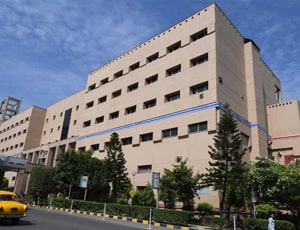
Types of Atrial Septal Defect (ASD) Repair in Apollo Multispecialty Hospitals and its associated cost
| Treatment Option | Approximate Cost Range (USD) | Approximate Cost Range (INR) |
|---|---|---|
| ASD Repair (Overall) | 5744 - 13347 | 452566 - 1131354 |
| Surgical Repair | 5613 - 9984 | 458336 - 833754 |
| Transcatheter ASD Closure | 6613 - 11299 | 561687 - 941783 |
| Robotic-assisted ASD Repair | 7771 - 13360 | 634885 - 1082676 |
DOCTORS IN 13 SPECIALITIES
FACILITIES & AMENITIES
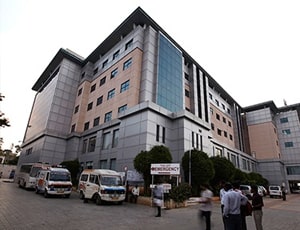
Types of Atrial Septal Defect (ASD) Repair in BGS Gleneagles Global Hospitals and its associated cost
| Treatment Option | Approximate Cost Range (USD) | Approximate Cost Range (INR) |
|---|---|---|
| ASD Repair (Overall) | 5512 - 13329 | 467210 - 1112927 |
| Surgical Repair | 5501 - 10213 | 461052 - 829884 |
| Transcatheter ASD Closure | 6678 - 11017 | 544884 - 926341 |
| Robotic-assisted ASD Repair | 7832 - 13718 | 643343 - 1097210 |
DOCTORS IN 14 SPECIALITIES
FACILITIES & AMENITIES
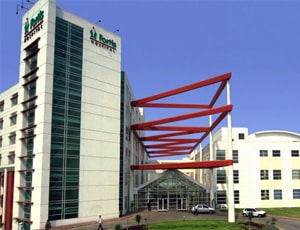
Types of Atrial Septal Defect (ASD) Repair in Fortis Hospital and its associated cost
| Treatment Option | Approximate Cost Range (USD) | Approximate Cost Range (INR) |
|---|---|---|
| ASD Repair (Overall) | 5078 - 12152 | 414204 - 997021 |
| Surgical Repair | 5072 - 9094 | 418016 - 746674 |
| Transcatheter ASD Closure | 6075 - 10136 | 498754 - 836080 |
| Robotic-assisted ASD Repair | 7086 - 12163 | 584783 - 999771 |
DOCTORS IN 12 SPECIALITIES
FACILITIES & AMENITIES
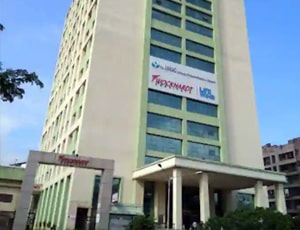
Types of Atrial Septal Defect (ASD) Repair in Wockhardt Hospital, Umrao and its associated cost
| Treatment Option | Approximate Cost Range (USD) | Approximate Cost Range (INR) |
|---|---|---|
| ASD Repair (Overall) | 5072 - 12196 | 418199 - 995810 |
| Surgical Repair | 5074 - 9090 | 416284 - 748860 |
| Transcatheter ASD Closure | 6116 - 10172 | 500448 - 830035 |
| Robotic-assisted ASD Repair | 7137 - 12151 | 583821 - 995688 |
DOCTORS IN 13 SPECIALITIES
FACILITIES & AMENITIES
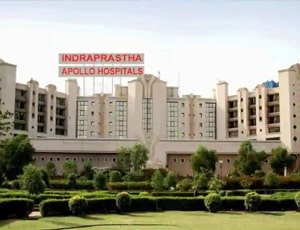
Types of Atrial Septal Defect (ASD) Repair in Indraprastha Apollo Hospital and its associated cost
| Treatment Option | Approximate Cost Range (USD) | Approximate Cost Range (INR) |
|---|---|---|
| ASD Repair (Overall) | 5564 - 13416 | 467768 - 1126690 |
| Surgical Repair | 5534 - 10100 | 463611 - 824911 |
| Transcatheter ASD Closure | 6757 - 11447 | 545960 - 903810 |
| Robotic-assisted ASD Repair | 7964 - 13414 | 653658 - 1094953 |
DOCTORS IN 14 SPECIALITIES
FACILITIES & AMENITIES
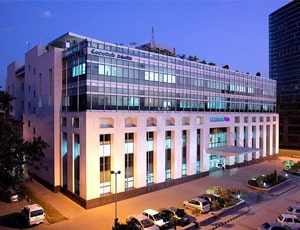
Types of Atrial Septal Defect (ASD) Repair in Manipal Hospital, Yeshwantpur and its associated cost
| Treatment Option | Approximate Cost Range (USD) | Approximate Cost Range (INR) |
|---|---|---|
| ASD Repair (Overall) | 5730 - 13353 | 457418 - 1088021 |
| Surgical Repair | 5722 - 10231 | 466994 - 826618 |
| Transcatheter ASD Closure | 6745 - 11038 | 554156 - 924274 |
| Robotic-assisted ASD Repair | 7935 - 13404 | 633332 - 1119789 |
Atrial Septal Defect is a congenital heart defect in which there is a hole in the wall (septum) between the upper chambers of the heart (atria). This hole allows blood to flow between the atria, which leads to increased blood flow to the lungs. While small ASDs may not cause any significant concerns, whereas larger ones may require medical attention, such as surgical repair, to prevent complications.
The main reason for atrial septal defects remains elusive, manifesting as an alteration in the heart's structure during fetal development. The intricate process of the baby's heart formation is an essential stage for the emergence of this condition.
ASDs may arise due to the following factors, including
Atrial septal defects (ASDs) may be better understood by considering the normal functioning of the heart, which has four chambers – two atria and two ventricles. The right side of the heart directs blood to the lungs for oxygenation, while the left side pumps oxygenated blood throughout the body via the aorta. A significant ASD can lead to an excess flow of blood to the lungs, straining the right side of the heart. If left untreated, this can result in the enlargement and weakening of the right heart chamber and an elevation in pulmonary artery pressure, Causing pulmonary hypertension.
There are different types of ASDs classified based on the Location and the size of the hole, these include:
Atrial septal defect (ASD) repair is used to close a hole in the septum, There are different methods for repairing ASD, and the choice of procedure depends on the size, the position of the defect, and the patient's general health the determining factors in choosing the appropriate treatment.
Here are the common ways of treatment:
Post-surgery, patients usually have a short hospital stay, with transcatheter closure requiring 1-2 days and open-heart surgery lasting 3-7 days, sometimes involving ICU transfer to continue monitoring. A comprehensive recovery plan involves regular follow-up appointments, dietary adjustments, wound care, and emotional support. Additionally, effective pain management, adherence to activity restrictions, and a gradual return to normal activities are crucial components of the recovery process.
Ask your healthcare adviser for the best multiple options and choose the one that meets your expectations
In India, the average starting cost for Atrial Septal Defect (ASD) Repair is USD 5000. NABH, JCI are just some of the accreditations which top hospitals in India hold where a Atrial Septal Defect (ASD) Repair is conducted.
The cost of Atrial Septal Defect (ASD) Repair in India may differ from one medical facility to the other. The Atrial Septal Defect (ASD) Repair package cost usually includes all the expenses related to pre and post surgery expenses of the patient. The Atrial Septal Defect (ASD) Repair cost in India includes the cost of anesthesia, medicines, hospitalization and the surgeon's fee. There are many things that may increase the cost of Atrial Septal Defect (ASD) Repair in India, including prolonged hospital stay and complications after the procedure.
Many hospitals in India perform Atrial Septal Defect (ASD) Repair. Some of the most renowned hospitals for Atrial Septal Defect (ASD) Repair in India include the following:
The recovery of the patient many vary, depending on several factors. However, on an average, patient is supposed to stay for about 20 days in the country after discharge. This is important to ensure that the surgery was successful. During this time, control and follow-up tests take place to check for medical fitness.
Apart from the Atrial Septal Defect (ASD) Repair cost, there are a few other daily charges that the patient may have to pay. These are the charges for daily meals and accommodation outside the hospital. The extra charges may start from USD 50 per person.
Some of the best cities in India which offer Atrial Septal Defect (ASD) Repair are:
There are many Atrial Septal Defect (ASD) Repair surgeons who offer video telemedicine consultation to patients who need this treatment. Some of them include the following:
| Doctor | Cost | Schedule Your Appointment |
|---|---|---|
| Dr. Bikram K Mohanty | USD 35 | Schedule Now |
| Dr. Ashish Chauhan | USD 14 | Schedule Now |
| Dr. Sumit Narang | USD 14 | Schedule Now |
After the Atrial Septal Defect (ASD) Repair takes place, the average duration of stay at the hospital is about 5 days. The doctors team review the patient's recovery during this time with the help of blood tests and imaging scans. Once they feel that everything is on track, the patient is discharged.
The average rating for Atrial Septal Defect (ASD) Repair hospitals in India is 3.9. This rating is calculated on the basis of different parameters such as attitude of the nurses, cleanliness, quality of food and the pricing policy.
There are more than 56 hospitals that offer Atrial Septal Defect (ASD) Repair in India. Such hospitals have the required infrastructure and a dedicated unit where patients can be treated. Additionally, these hospitals are known to comply with the international standards as well as local legal requirements for the treatment of patients.
Some of the best medical specialists for Atrial Septal Defect (ASD) Repair in India are: